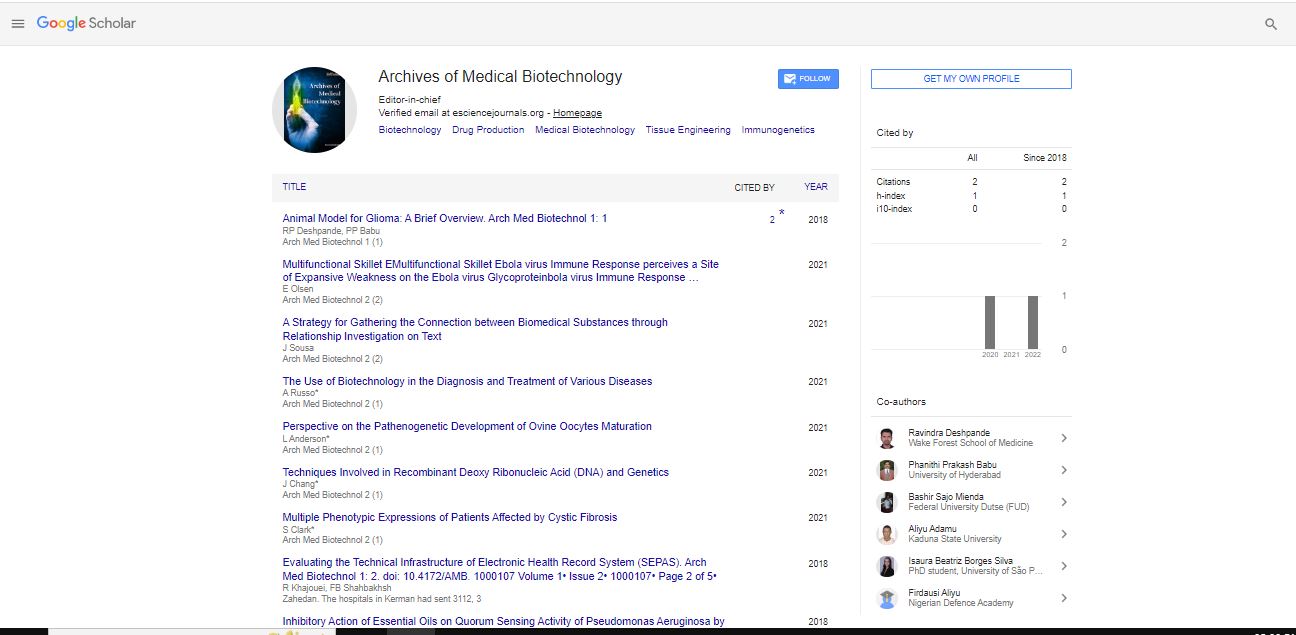The role of PIWI interfering RNA in liver Cancer
A Diab, S Mamdouh and G Oura
MSA University, Egypt
: Arch Med Biotechnol
Abstract
Hepatocellular carcinoma is one of the deadliest cancers and influences on several populations in the world. HCC is caused by HBV, HCV and one of the factors that develop HCC is cirrhosis that is more higher risk in patients than chronic hepatitis patients (WHO,2016). The best techniques for diagnosis is molecular diagnostics which is a test grow fast and spot on special sequences in RNA and DNA that can or cannot linked with diseases. There are types of biomarkers such as Pathological Biomarkers, Radiographic diagnosis, Alpha-Fetoprotein and PIWI-RNA (Procop, 2007). PIWI-RNA refers to P-element-induced wimpy testis interacting RNA that is type of small molecules of non-coding RNA which has been lately known to become closely related to biology of cancer (Anderson et al., 2016). It consists of 24 to 32 nucleotides however miRNA and siRNA consist of 20to 23 nucleotides (Rana & Esteller, 2011). The particular mechanism is relying on small RNA small. MiRNA and si-RNA cooperate with Ago subfamily but piRNA cooperate with PIWI proteins. piRNA is not like miRNA and siRNA which can work through epigenetic silencing instead of transcript targeting. An increasing number of studies have shown that aberrant piRNA expression is a signature feature across multiple tumour types; however, their specific tumorigenic functions remain unclear. In this study, PIWIL1 discussed and its expression detected in 10 samples of non-tumor liver tissue and10 samples of tumor liver tissues were taken from Patients with HCC. Ten samples of blood serum were taken from healthy volunteers and 10 samples of blood serum were taken from patients with HCC. Serum and tissue PIWIL1 levels appeared to be significant biomarker for HCC.
Biography
E-mail: gehad_oura@hotmail.com
 Spanish
Spanish  Chinese
Chinese  Russian
Russian  German
German  French
French  Japanese
Japanese  Portuguese
Portuguese  Hindi
Hindi 